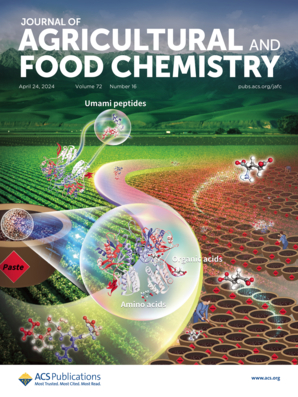NEFA Induces Ferroptosis in Transition Dairy Cattle Liver by Increasing Lipid Reactive Oxygen Species and Downregulating SLC7A11.
IF 5.7
1区 农林科学
Q1 AGRICULTURE, MULTIDISCIPLINARY
引用次数: 0
Abstract
Excessive lipid mobilization in transition dairy cattle leads to elevated levels of nonesterified fatty acids (NEFA), causing liver injury. Ferroptosis, a novel cell death mechanism, has significant roles in liver disease progression. However, its potential role in NEFA-induced liver injury remains unclear. In this study, we demonstrated ferroptosis occurrence in the transition cattle liver through histopathological damage, increased lipid peroxidation, and iron accumulation. In vitro, using ferroptosis inducer RAS-selective lethal 3 (RSL3), NEFA significantly enhanced ferroptosis in bovine hepatocytes. Subsequent experiments with ferroptosis inhibitor ferrostatin-1 (Fer-1) showed Fer-1 markedly reduced NEFA-enhanced ferroptosis, confirming ferroptosis' critical role. Mechanistic studies revealed that NEFA promoted ferroptosis by inducing lipid ROS production effectively inhibited by N-acetylcysteine (NAC) and by downregulating SLC7A11 expression. In conclusion, ferroptosis critically mediates NEFA-induced liver injury in transition dairy cattle, indicating that targeting this pathway may offer potential therapeutic strategies to mitigate liver damage associated with excessive lipid mobilization.NEFA通过增加脂质活性氧和下调SLC7A11诱导过渡期奶牛肝脏铁凋亡。
过渡期奶牛过度的脂质动员导致非酯化脂肪酸(NEFA)水平升高,导致肝损伤。铁下垂是一种新的细胞死亡机制,在肝脏疾病的进展中起重要作用。然而,其在nefa诱导的肝损伤中的潜在作用尚不清楚。在这项研究中,我们通过组织病理学损伤、脂质过氧化增加和铁积累证明了铁下垂在过渡期牛肝脏中的发生。在体外,使用铁下垂诱导剂ras -选择性致死3 (RSL3), NEFA显著增强牛肝细胞铁下垂。随后用铁下垂抑制剂铁抑素-1 (fer1)进行的实验显示,fer1可显著降低nefa增强的铁下垂,证实了铁下垂的关键作用。机制研究表明,NEFA通过诱导被n -乙酰半胱氨酸(NAC)有效抑制的脂质ROS生成和下调SLC7A11表达促进铁下垂。综上所述,铁ptosis在过渡期奶牛中介导nefa诱导的肝损伤,表明靶向这一途径可能提供潜在的治疗策略,以减轻与过度脂质动员相关的肝损伤。
本文章由计算机程序翻译,如有差异,请以英文原文为准。
求助全文
约1分钟内获得全文
求助全文
来源期刊
CiteScore
9.90
自引率
8.20%
发文量
1375
审稿时长
2.3 months
期刊介绍:
The Journal of Agricultural and Food Chemistry publishes high-quality, cutting edge original research representing complete studies and research advances dealing with the chemistry and biochemistry of agriculture and food. The Journal also encourages papers with chemistry and/or biochemistry as a major component combined with biological/sensory/nutritional/toxicological evaluation related to agriculture and/or food.

 求助内容:
求助内容: 应助结果提醒方式:
应助结果提醒方式:


